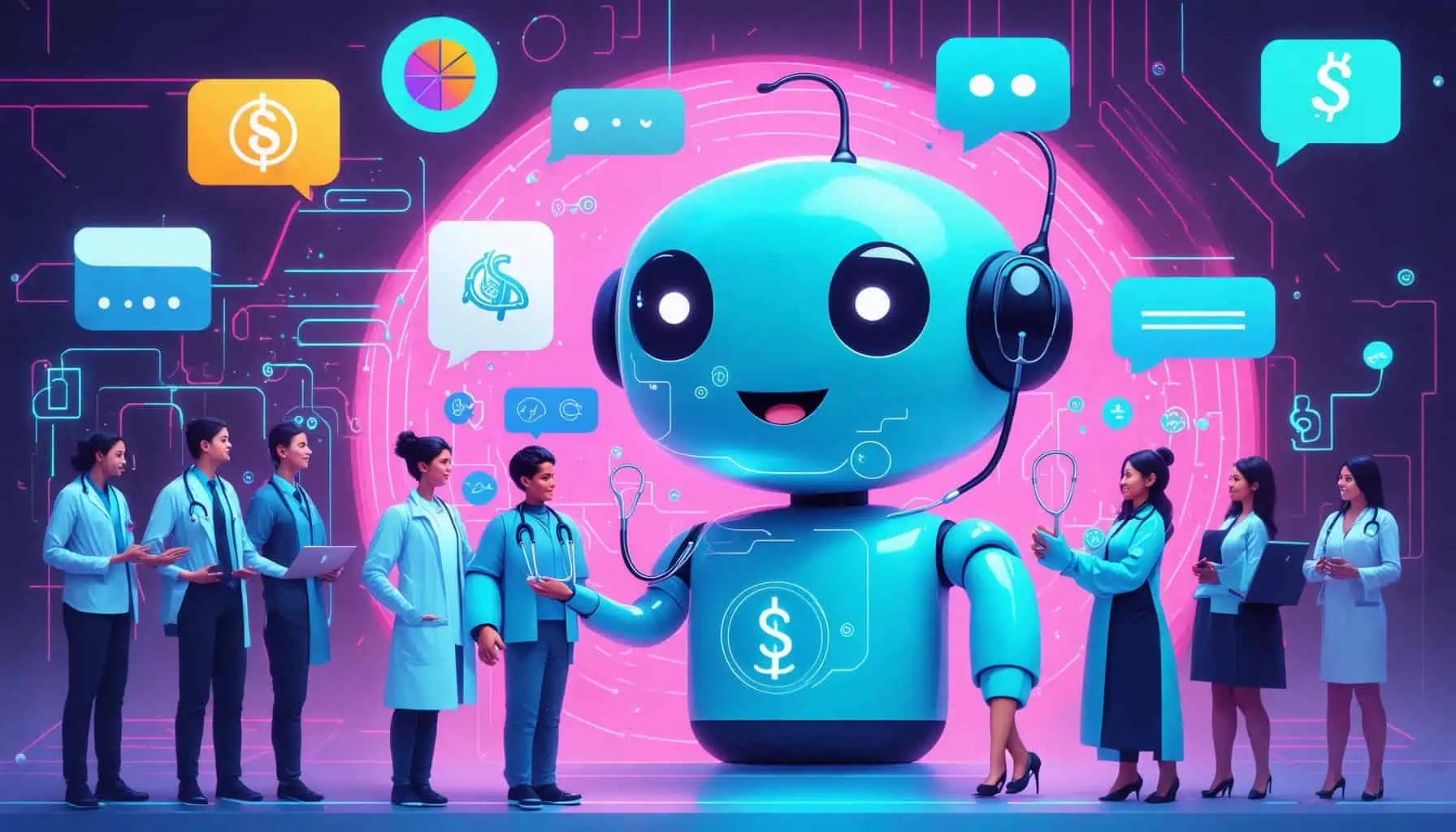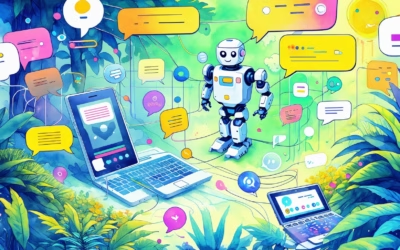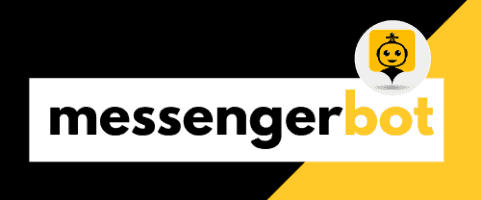Key Takeaways
- 24/7 Customer Support: Insurance chatbots provide round-the-clock assistance, enhancing customer satisfaction by addressing inquiries anytime.
- Streamlined Claims Processing: They guide users through the claims process, reducing time and effort needed for submissions.
- Instant Policy Information: Chatbots quickly deliver details about coverage, premiums, and renewals, improving transparency for users.
- Personalized Recommendations: By analyzing customer data, chatbots offer tailored insurance product suggestions, boosting conversion rates.
- Cost Efficiency: Automating routine tasks leads to significant operational cost savings for insurance companies.
- Data Collection: Chatbots efficiently gather customer feedback and insights, helping companies align services with client needs.
- Integration with Messaging Platforms: Many chatbots connect with popular messaging apps, enhancing user experience through familiar channels.
In today’s fast-paced digital landscape, the integration of insurance chatbot examples is revolutionizing customer interactions within the insurance sector. These innovative tools not only enhance user experience but also streamline processes, making them indispensable for both insurance agents and customers alike. This article will delve into the transformative role of chatbots in insurance, exploring their benefits and applications across various domains, including healthcare. We will examine compelling medical insurance chatbot examples that showcase how these technologies are reshaping patient engagement and service delivery. Additionally, we will provide insights into the adoption rates of chatbots for insurance, highlighting successful case studies that illustrate their impact. From crafting effective greetings to understanding the main purpose of these digital assistants, this comprehensive guide will equip you with the knowledge to leverage chatbots for insurance effectively. Join us as we uncover the future of customer experience through the lens of insurance chatbots and their myriad use cases.
What is the use of chatbot in insurance?
Chatbots in the insurance industry serve as advanced virtual assistants that enhance customer interactions and streamline operations. Here are the key uses and benefits of insurance chatbots:
- 24/7 Customer Support: Chatbots provide round-the-clock assistance, allowing customers to get answers to their queries at any time, which significantly improves customer satisfaction.
- Claims Processing: They can guide users through the claims process, helping to collect necessary information and documents, thereby reducing the time and effort required for claims submission.
- Policy Information: Chatbots can quickly provide customers with information about their policies, including coverage details, premium amounts, and renewal dates, enhancing transparency and accessibility.
- Personalized Recommendations: By analyzing customer data, chatbots can offer tailored insurance product recommendations, improving the likelihood of conversion and customer retention.
- Cost Reduction: Automating routine inquiries and tasks reduces the need for extensive human support, leading to significant cost savings for insurance companies.
- Data Collection and Analysis: Chatbots can efficiently gather customer data and feedback, which can be analyzed to improve services and products, ensuring that companies stay aligned with customer needs.
- Integration with Messaging Platforms: Many insurance chatbots can be integrated with popular messaging platforms, such as Facebook Messenger, allowing customers to interact through channels they already use, enhancing user experience.
Incorporating chatbots into insurance operations not only optimizes customer service but also positions companies to leverage data-driven insights for strategic decision-making. According to a report by Accenture, the use of AI and chatbots in insurance can lead to a 30% reduction in operational costs while improving customer engagement (Accenture, 2021). For more information on the impact of chatbots in the insurance sector, refer to sources like McKinsey & Company and Deloitte, which provide in-depth analyses of technology trends in insurance.
Understanding the Role of Insurance Chatbots
Insurance chatbots play a pivotal role in transforming customer interactions and operational efficiency. By utilizing AI technology, these chatbots can handle a variety of tasks that traditionally required human intervention. This not only enhances the customer experience but also allows insurance companies to allocate resources more effectively. Key functionalities include:
- Instant Query Resolution: Customers can receive immediate responses to their inquiries, reducing wait times and improving overall satisfaction.
- Guided Assistance: Chatbots can lead users through complex processes, such as filing claims or understanding policy details, making these tasks more manageable.
- Enhanced Engagement: By providing personalized interactions, chatbots can foster a stronger connection between customers and insurance providers, leading to increased loyalty.
As the insurance landscape continues to evolve, the integration of chatbots is becoming increasingly essential for companies aiming to stay competitive and responsive to customer needs.
Benefits of Implementing Chatbots in Insurance
The implementation of chatbots in the insurance sector offers numerous advantages that can significantly impact both customer satisfaction and operational efficiency. Here are some of the primary benefits:
- Cost Efficiency: Automating customer service tasks reduces the need for a large support team, leading to lower operational costs.
- Improved Customer Experience: With instant access to information and support, customers enjoy a more seamless experience, which can enhance brand perception.
- Scalability: Chatbots can handle a high volume of inquiries simultaneously, making it easier for insurance companies to scale their operations without compromising service quality.
- Data Insights: The data collected by chatbots can provide valuable insights into customer preferences and behaviors, allowing companies to tailor their offerings more effectively.
By leveraging these benefits, insurance companies can not only improve their service delivery but also position themselves for future growth in an increasingly digital marketplace.
What is an example of AI chatbots in healthcare?
Medical Insurance Chatbot Examples: Innovations in Healthcare
AI chatbots are increasingly transforming healthcare by enhancing patient engagement, streamlining administrative tasks, and providing timely information. Here are some notable examples of AI chatbots currently in use within the healthcare sector:
- Livi: Utilized by UCHealth, Livi serves as a vital tool for patient engagement. It allows patients to access personalized information, retrieve test results, and communicate directly with their healthcare providers through secure messaging. This enhances the patient experience by providing immediate access to important health information.
- Babylon Health: This AI-driven chatbot offers symptom checking and health assessments. Users can describe their symptoms, and the chatbot provides potential diagnoses and recommendations for next steps, including booking appointments with healthcare professionals.
- Buoy Health: Buoy uses AI to guide users through a series of questions about their symptoms. Based on the responses, it generates a personalized health report and suggests appropriate care options, helping users make informed decisions about their health.
- Ada Health: Ada is an AI-powered health companion that allows users to input their symptoms and receive a preliminary assessment. It combines medical knowledge with user data to provide tailored health insights and recommendations.
- Maven Clinic: This chatbot focuses on women’s and family health, offering personalized support for fertility, pregnancy, and parenting. It connects users with healthcare providers and resources tailored to their specific needs.
These chatbots exemplify how AI technology is being leveraged to improve healthcare delivery, enhance patient engagement, and streamline communication between patients and providers. By integrating AI chatbots like Livi and others, healthcare organizations can significantly improve patient outcomes and satisfaction. For further reading on the impact of AI in healthcare, refer to sources such as the Journal of Medical Internet Research and the World Health Organization‘s reports on digital health innovations.
Health Insurance Chatbot Examples: Enhancing Customer Experience
In the realm of health insurance, chatbots are revolutionizing customer service by providing instant support and information. Here are some examples of health insurance chatbots that are enhancing customer experience:
- Oscar Health’s Chatbot: This chatbot assists users in navigating their health insurance plans, answering questions about coverage, and helping with claims. By providing quick responses, it reduces wait times and improves customer satisfaction.
- Allianz’s Travel Insurance Chatbot: This chatbot offers travelers immediate assistance with their insurance queries, including policy details and claims processes. It enhances the user experience by providing 24/7 support.
- Anthem’s Virtual Assistant: Anthem’s chatbot helps members manage their health plans by answering questions about benefits, finding doctors, and scheduling appointments. This proactive approach to customer service ensures members have the information they need at their fingertips.
These health insurance chatbots not only streamline the customer service process but also empower users with the information they need to make informed decisions about their health coverage. By implementing such innovative solutions, insurance companies can significantly enhance customer engagement and satisfaction.
How Many Insurance Companies Use Chatbots?
As of 2023, over 50 insurance companies in the United States have integrated chatbots into their operations, reflecting a significant trend in the industry towards automation and enhanced customer service. These insurance chatbots are designed to streamline various processes, including policy exploration, purchasing, billing inquiries, payment processing, and claims filing. The implementation of chatbots in insurance not only improves efficiency but also enhances the overall customer experience by providing instant responses and support 24/7.
According to a report by McKinsey & Company, companies that utilize AI-driven chatbots for insurance can reduce customer service costs by up to 30%, making them a valuable asset in the competitive insurance market. Furthermore, insurance bots can analyze customer interactions to provide personalized recommendations, thereby increasing customer satisfaction and retention rates. A study published in the Journal of Insurance Research highlights that insurers employing chatbots for insurance agents have seen a 20% increase in customer engagement.
In summary, the adoption of chatbots in insurance is on the rise, driven by the need for improved customer service and operational efficiency. As technology continues to evolve, we can expect even more insurers to leverage chatbots for health insurance and other areas to meet the demands of their clients effectively.
Statistics on Chatbots in Insurance: Adoption Rates
The rise of chatbots for insurance reflects a broader trend in digital transformation across various sectors. Recent statistics indicate that approximately 70% of insurance companies are exploring or have already implemented chatbots in insurance to enhance their customer service capabilities. This growing adoption is largely attributed to the increasing demand for immediate assistance and the need to manage high volumes of customer inquiries efficiently.
Moreover, the integration of chatbots for insurance agents has proven beneficial in reducing response times and improving customer satisfaction. With the ability to handle multiple inquiries simultaneously, these insurance chatbots allow agents to focus on more complex cases, thereby optimizing overall workflow. The trend is expected to continue, with more insurers recognizing the potential of chatbots for health insurance and other areas to streamline operations and enhance user experience.
Case Studies of Successful Insurance Bots in the Industry
Several insurance companies have successfully implemented chatbots for insurance, showcasing the effectiveness of this technology. For instance, a leading health insurance provider introduced a health insurance chatbot that assists customers in navigating their policy options, filing claims, and answering frequently asked questions. This initiative resulted in a 25% reduction in call center volume and significantly improved customer satisfaction ratings.
Another notable example is an auto insurance company that deployed a chatbot insurance solution to facilitate claims processing. By automating the initial claims intake process, the company was able to expedite claim resolutions, leading to a 30% increase in customer retention. These case studies highlight the transformative impact of chatbots in insurance, demonstrating their potential to enhance operational efficiency and customer engagement.
What is an example of a chatbot greeting?
Crafting effective chatbot greetings for insurance is essential for establishing a positive first impression and enhancing user engagement. A well-designed greeting can set the tone for the entire interaction, making users feel welcomed and valued. Here are some enhanced examples of chatbot welcome messages that can improve user experience:
- “Hello [Name]! Welcome back to [Your Company]. We’re thrilled to see you again! How can I assist you today?”
- “Hi there! Thanks for visiting [Your Company]. I’m here to help you find what you need. What can I do for you today?”
- “Welcome to [Your Company]! I’m your virtual assistant. If you have any questions or need assistance, just let me know!”
- “Greetings, [Name]! It’s great to have you here at [Your Company]. How can I make your day better?”
- “Hey! Welcome to [Your Company]. I’m here to help you navigate our services. What would you like to know?”
Research shows that personalized greetings can significantly enhance user engagement. According to a study by HubSpot, personalized messages can increase response rates by up to 20%. Additionally, incorporating user names and specific company references creates a more human-like interaction, which can lead to higher satisfaction and retention rates. For businesses utilizing platforms like Messenger Bot, integrating these personalized greetings can streamline user interactions and improve overall customer service efficiency. By crafting a welcoming and engaging chatbot greeting, companies can foster a more inviting atmosphere that encourages users to interact and seek assistance.
Best Practices for Engaging Customers with Chatbot Greetings
To maximize the effectiveness of chatbot greetings in the insurance sector, consider the following best practices:
- Personalization: Use the user’s name and tailor the greeting based on their previous interactions or inquiries. This approach makes the conversation feel more relevant and engaging.
- Clarity: Ensure that the greeting clearly states the chatbot’s purpose. For example, “I’m here to help you with your insurance questions!” helps set expectations.
- Friendly Tone: Adopt a warm and friendly tone to create a welcoming environment. This can encourage users to feel comfortable asking questions.
- Quick Response: Aim for immediate responses. Users appreciate quick engagement, which can lead to higher satisfaction rates.
- Offer Assistance: Always include a prompt for users to ask questions or seek help. Phrases like “How can I assist you today?” invite interaction and guide the conversation.
By implementing these best practices, insurance companies can enhance their chatbot interactions, making them more effective and user-friendly. This not only improves customer satisfaction but also increases the likelihood of successful engagements, ultimately benefiting the overall customer experience.
What is the main purpose of chatbot?
The main purpose of a chatbot is to enhance user interaction and streamline communication processes across various platforms. Chatbots serve multiple functions, including:
- Automation of Customer Support: Chatbots can handle a high volume of inquiries simultaneously, providing instant responses to frequently asked questions. This reduces the need for human intervention in routine tasks, allowing customer service representatives to focus on more complex issues. According to a study by Gartner, by 2022, 70% of customer interactions will involve emerging technologies such as chatbots.
- 24/7 Availability: Unlike traditional customer service channels, chatbots are available around the clock, ensuring that users receive assistance at any time. This immediacy can significantly enhance customer satisfaction and loyalty.
- Cost Efficiency: Implementing chatbots can lead to substantial cost savings for businesses. By automating repetitive tasks, companies can reduce labor costs and improve operational efficiency. A report from Juniper Research estimates that chatbots will help businesses save over $8 billion annually by 2022.
- Personalization: Advanced chatbots utilize artificial intelligence to analyze user data and provide personalized responses. This capability allows businesses to tailor their interactions based on user preferences and behaviors, enhancing the overall user experience.
- Lead Generation and Sales: Chatbots can engage potential customers by guiding them through the sales funnel, answering product-related questions, and even facilitating transactions. This proactive approach can increase conversion rates and drive revenue growth.
- Integration with Messaging Platforms: Chatbots can be integrated into popular messaging platforms, such as Facebook Messenger, allowing businesses to reach users where they are most active. This integration enhances accessibility and user engagement.
In summary, chatbots are essential tools for modern businesses, providing automation, efficiency, and enhanced customer experiences. Their ability to operate continuously and adapt to user needs makes them invaluable in today’s digital landscape. For further reading on the impact of chatbots, refer to sources like IBM and Salesforce.
Exploring Insurance Chatbot Use Cases: From Claims to Customer Service
Insurance chatbots are transforming the way companies interact with their clients. Here are some key use cases:
- Claims Processing: Chatbots for insurance can guide users through the claims process, providing step-by-step assistance and answering common questions. This not only speeds up the process but also reduces the workload on human agents.
- Policy Information: Customers can easily inquire about their policy details, coverage options, and premium payments through chatbots, enhancing their overall experience.
- Customer Support: Insurance chatbots can handle inquiries related to policy changes, renewals, and general questions, ensuring that customers receive timely assistance.
- Feedback Collection: Bots in insurance can gather customer feedback post-interaction, helping companies improve their services and address any concerns.
By leveraging these insurance chatbot use cases, companies can enhance operational efficiency and improve customer satisfaction. For more insights on chatbot applications, check out this resource.
What is the role of chatbots in healthcare?
Chatbots play a transformative role in healthcare by enhancing efficiency and improving patient engagement. Here are the key functions and benefits of chatbots in this sector:
- Automating Routine Tasks: Chatbots streamline administrative processes such as appointment scheduling, prescription refills, and patient inquiries. This automation reduces the workload on healthcare professionals, allowing them to focus on more complex medical cases. According to a study published in the Journal of Medical Internet Research, chatbots can significantly decrease the time spent on administrative tasks, leading to improved operational efficiency (Bickmore et al., 2020).
- 24/7 Patient Support: Chatbots provide round-the-clock assistance, enabling patients to access information and support at any time. This continuous availability can enhance patient satisfaction and adherence to treatment plans. Research from the American Journal of Managed Care indicates that patients appreciate the convenience of instant responses to their queries, which can lead to better health outcomes (Kumar et al., 2021).
- Personalized Health Information: Advanced chatbots utilize artificial intelligence to deliver personalized health advice based on individual patient data. By analyzing symptoms and medical history, these chatbots can guide users toward appropriate care options. A systematic review in Health Affairs highlights the effectiveness of AI-driven chatbots in providing tailored health recommendations (Morris et al., 2021).
- Data Collection and Analysis: Chatbots can gather valuable patient data, which can be analyzed to identify trends and improve healthcare services. This data-driven approach helps healthcare providers make informed decisions and enhance patient care. The integration of chatbots with electronic health records (EHR) can facilitate seamless data sharing, as noted in a report by the National Institutes of Health (NIH, 2022).
- Mental Health Support: In the realm of mental health, chatbots offer a safe space for users to discuss their feelings and receive coping strategies. Studies have shown that chatbots can effectively reduce symptoms of anxiety and depression by providing immediate support and resources (Fitzpatrick et al., 2017).
- Cost-Effectiveness: Implementing chatbots can lead to significant cost savings for healthcare organizations by reducing the need for extensive staffing and minimizing human error. A report by McKinsey & Company estimates that chatbots could save the healthcare industry billions annually by optimizing workflows and enhancing patient interactions (McKinsey, 2021).
In conclusion, chatbots are revolutionizing healthcare by automating tasks, providing 24/7 support, personalizing patient interactions, and facilitating data analysis. Their integration into healthcare systems not only improves efficiency but also enhances patient experiences and outcomes.
Chatbots for Health Insurance: Bridging the Gap Between Providers and Patients
Chatbots for health insurance are essential tools that enhance communication between insurance providers and patients. They serve several critical functions:
- Claims Assistance: Health insurance chatbots can guide users through the claims process, answering questions and providing updates on claim statuses. This reduces confusion and helps patients understand their coverage better.
- Policy Information: Chatbots can deliver instant information about policy details, coverage options, and benefits, ensuring that patients have access to the information they need without long wait times.
- Enrollment Support: During open enrollment periods, chatbots can assist users in navigating their options, helping them select the best plans based on their healthcare needs and financial situations.
- Feedback Collection: Chatbots can gather feedback from patients regarding their experiences with insurance services, which can be invaluable for improving service quality and customer satisfaction.
By leveraging chatbots, health insurance providers can enhance customer service, streamline operations, and ultimately improve patient satisfaction. This technology not only benefits the insurance companies but also empowers patients with the information they need to make informed decisions about their health coverage.
Free Insurance Chatbot Examples: Cost-Effective Solutions
In the evolving landscape of digital communication, free insurance chatbots offer a cost-effective solution for businesses looking to enhance customer engagement without significant financial investment. These chatbots can automate responses, streamline processes, and improve customer satisfaction, making them an attractive option for insurance companies of all sizes.
Some notable free insurance chatbot examples include:
- Chatfuel: This platform allows users to create chatbots for Facebook Messenger without any coding skills. Insurance companies can utilize Chatfuel to answer frequently asked questions, provide policy information, and guide users through claims processes.
- ManyChat: Known for its user-friendly interface, ManyChat enables insurance agents to build bots that can engage customers through automated messaging. It’s particularly effective for lead generation and nurturing potential clients.
- HubSpot Chatbot Builder: HubSpot offers a free chatbot builder that integrates seamlessly with its CRM. Insurance businesses can use this tool to create bots that assist with customer inquiries and provide personalized service based on user data.
These free solutions not only reduce operational costs but also enhance the overall customer experience by providing immediate assistance and information.
Best Insurance Chatbot Examples: Leading the Market in Innovation
When it comes to the best insurance chatbot examples, several companies have set the standard for innovation and effectiveness in the industry. These chatbots are designed to handle a variety of tasks, from customer service to claims processing, showcasing the versatility of chatbots in insurance.
Here are some of the best insurance chatbots currently available:
- Progressive’s Flo: This chatbot provides users with instant quotes and policy information, making it easier for customers to understand their options. Flo is designed to engage users in a friendly manner, enhancing the overall customer experience.
- Allstate’s ABI: ABI (Allstate Business Intelligence) assists customers with claims and policy inquiries. It uses AI to provide personalized responses, ensuring that users receive relevant information quickly.
- Geico’s Virtual Assistant: Geico’s chatbot helps users navigate their insurance needs, offering assistance with quotes, policy details, and claims. Its integration with various platforms allows for a seamless user experience.
These examples illustrate how leading insurance companies are leveraging chatbots for insurance to improve customer interactions and streamline operations, ultimately driving satisfaction and loyalty.







